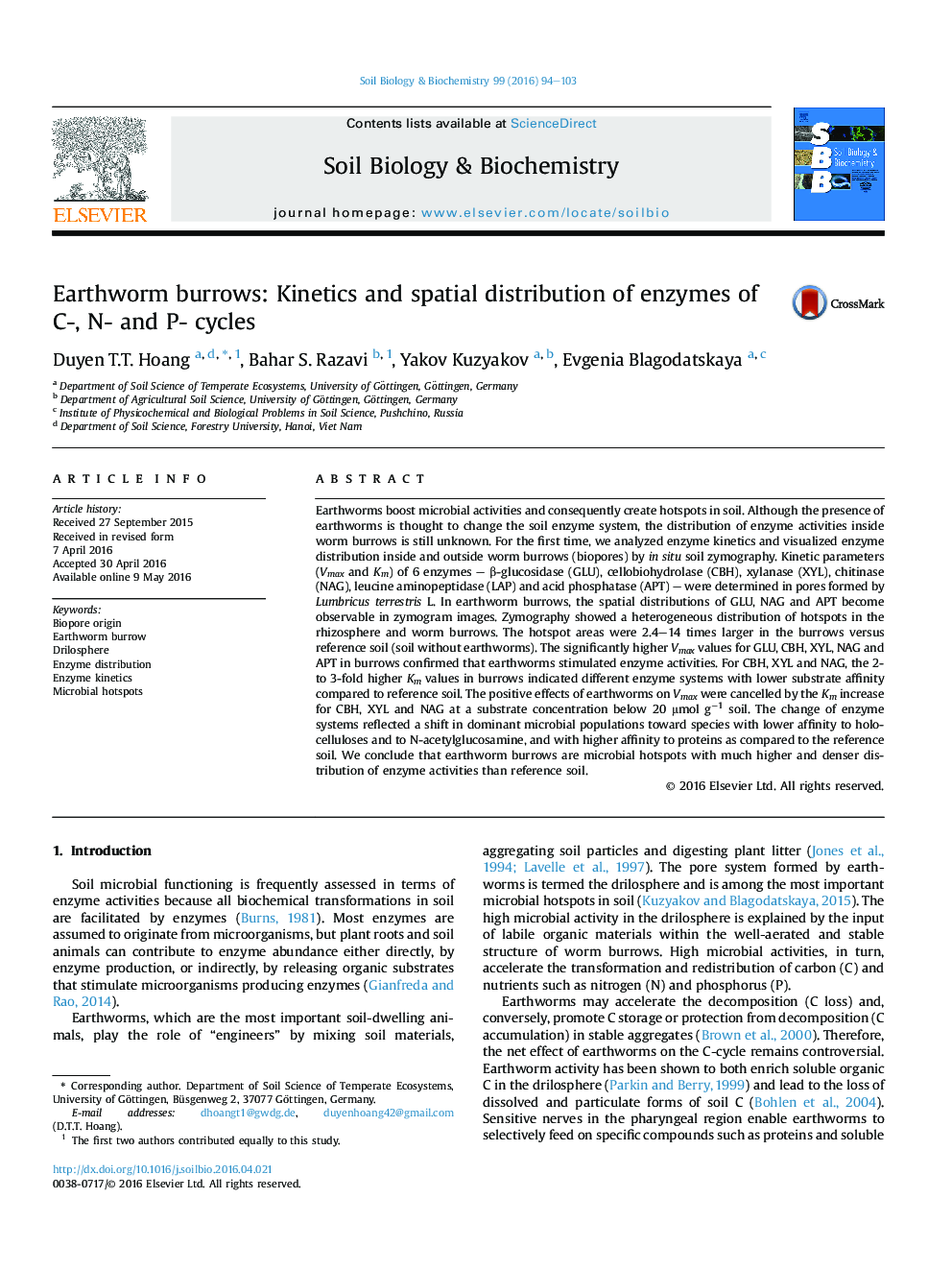| Article ID | Journal | Published Year | Pages | File Type |
|---|---|---|---|---|
| 2024301 | Soil Biology and Biochemistry | 2016 | 10 Pages |
•Visualization of enzyme activity inside earthworm biopores for the first time.•Combination of zymography and enzyme kinetics in soil under earthworm effect.•Largest percentage of hotspot area inside burrows proved that earthworms accelerated microbial enzyme activities.•Enzyme kinetics showed a shift in dominant microbial populations under the effect of earthworms.
Earthworms boost microbial activities and consequently create hotspots in soil. Although the presence of earthworms is thought to change the soil enzyme system, the distribution of enzyme activities inside worm burrows is still unknown. For the first time, we analyzed enzyme kinetics and visualized enzyme distribution inside and outside worm burrows (biopores) by in situ soil zymography. Kinetic parameters (Vmax and Km) of 6 enzymes – β-glucosidase (GLU), cellobiohydrolase (CBH), xylanase (XYL), chitinase (NAG), leucine aminopeptidase (LAP) and acid phosphatase (APT) – were determined in pores formed by Lumbricus terrestris L. In earthworm burrows, the spatial distributions of GLU, NAG and APT become observable in zymogram images. Zymography showed a heterogeneous distribution of hotspots in the rhizosphere and worm burrows. The hotspot areas were 2.4–14 times larger in the burrows versus reference soil (soil without earthworms). The significantly higher Vmax values for GLU, CBH, XYL, NAG and APT in burrows confirmed that earthworms stimulated enzyme activities. For CBH, XYL and NAG, the 2- to 3-fold higher Km values in burrows indicated different enzyme systems with lower substrate affinity compared to reference soil. The positive effects of earthworms on Vmax were cancelled by the Km increase for CBH, XYL and NAG at a substrate concentration below 20 μmol g−1 soil. The change of enzyme systems reflected a shift in dominant microbial populations toward species with lower affinity to holo-celluloses and to N-acetylglucosamine, and with higher affinity to proteins as compared to the reference soil. We conclude that earthworm burrows are microbial hotspots with much higher and denser distribution of enzyme activities than reference soil.
